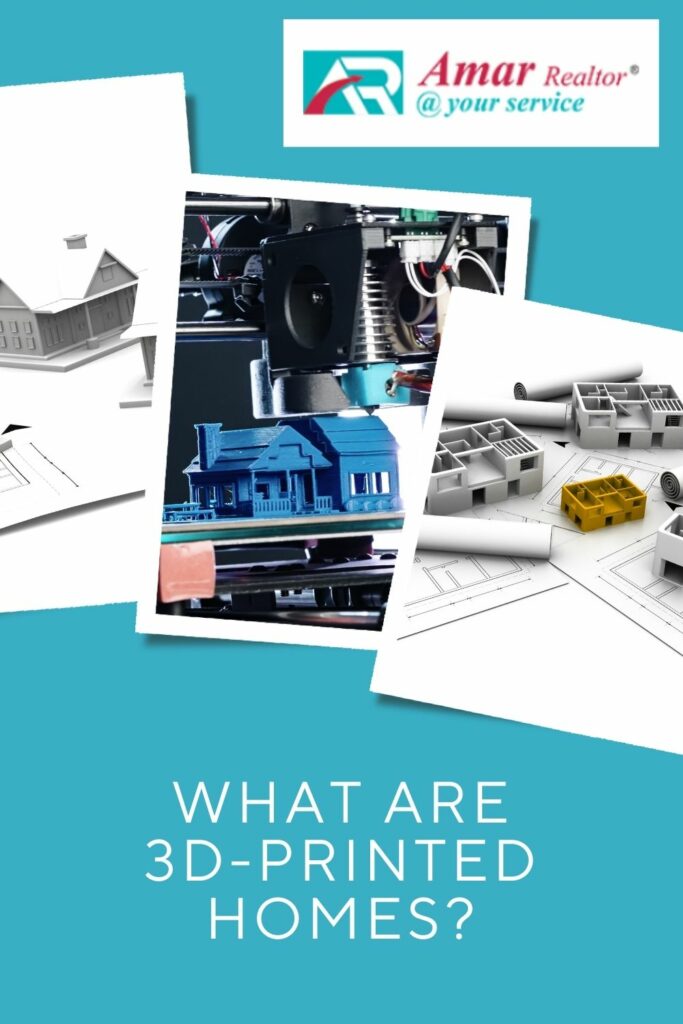Are 3D-Printed Homes the Homes of the Future?
3D printing, called Additive Manufacturing (AM), is constructing a 3-dimensional object based on a digital file. 3D printers take a digital file with a blueprint for the thing, then layer materials to create the object.
You may have seen 3D printers in local libraries, STEM academies, or perhaps even your workplace, and wonder how this machine could be involved in home construction. There is a major difference between typical 3D printers and 3D printers that manufacture homes: size.
3D-printed homes are made through massive, robust printers that can “print” with heavy-duty materials like concrete. Though hard to imagine when compared to traditional construction, 3D-printed homes may become a new portion of the housing market.
Some experts things 3D-printed homes will be a real estate revolution.
Can a Printer Build My House?
Calling it a 3D-printed home is a bit of a misnomer, as about 40% of the home’s construction is completed by the 3D printer. The process is expected to be refined as the technology develops. Still, 3D-printed dwellings are being constructed of concrete about halfway and finished with traditional building materials and techniques.
Benefits of 3D-Printed Homes
There are many potential benefits to choosing 3D-printed homes, and some of them represent a solution to the issues we are seeing in the real estate market. Some of these benefits include:
- Faster timeline. 3D printers used in home manufacturing can print a meter in seconds, constructing a house’s entire foundation and frame in a couple of days. Compared to the weeks or even months-long process of traditional framing, 3D-printed homes could be built in a fraction of the time.
- Reduces waste. Traditional building sites represent significant waste, generating about two to three tons of waste material for every home. 3D-printed houses, on the other hand, generate almost no waste. There are no scrap pieces of metal or wood from the framing process, leftover concrete that must go to a washout, or nails and litter left behind at the building site. 3D printing is superior when it comes to environmentally and financially conscious practices.
- Requires less labor. As the construction industry continues to struggle through a massive labor shortage, 3D-printed homes present a possible solution. There is no need for a large team of framers, and the 3D printers work around to clock to maximize the timeline in a way human labor never could.
- Reduces costs. One of the most intriguing benefits of a 3D-printed home is the reduced costs. A reduction in waste and labor each contribute to this factor, with no need to spend time or money cleaning up a building site and disposing of debris and litter, and a significantly lower cost for builders when there is no need to hire teams to pour a foundation or frame the house. These savings will be passed on to the buyers, addressing the nationwide cost of living issue.
How to Buy 3D-Printed Homes
There are not many 3D-printed homes available on the market yet. It is predicted to be an industry-disrupting technology trending shortly. Only a few 3D-printed houses are open for sale, but we expect to see more in the Bay Area soon.
To learn more details, let’s talk with Amar REALTOR®.
Let’s schedule a meeting with Amar REALTOR to review all your Real Estate objectives at a time that works for you.
 Please Click the link below to schedule a time on my online calendar!
Please Click the link below to schedule a time on my online calendar!
https://www.amarrealtor.com/meetingwithamarrealtor/
Contact Amar REALTOR® today for more information about Buying/Selling a Home in the Bay Area!
Amar REALTOR® offers expert real estate services with proven results in Bay Area Housing Market, including Homes for sale in Santa Clara County, San Mateo County, Contra Costa County, and Alameda County.
More Interesting Information about Bay-Area Real Estate
5 Things to Know About Bay-Area ADUs
What You Should Know About CA SB-9
5 Major Pitfalls to Avoid When Selling a Home
How the Federal Reserve Affects Mortgage Rates
Should You Choose an Adjustable Rate or a Fixed Mortgage?
How to Buy and Sell Simultaneously
How to Find Off-Market Homes in the Bay Area
5 Things to Know About Bay-Area ADUs
